Bookstore brand targets isolated areas closer to cultural traditions, helping them open a prosperous new chapter, Yang Yang reports.
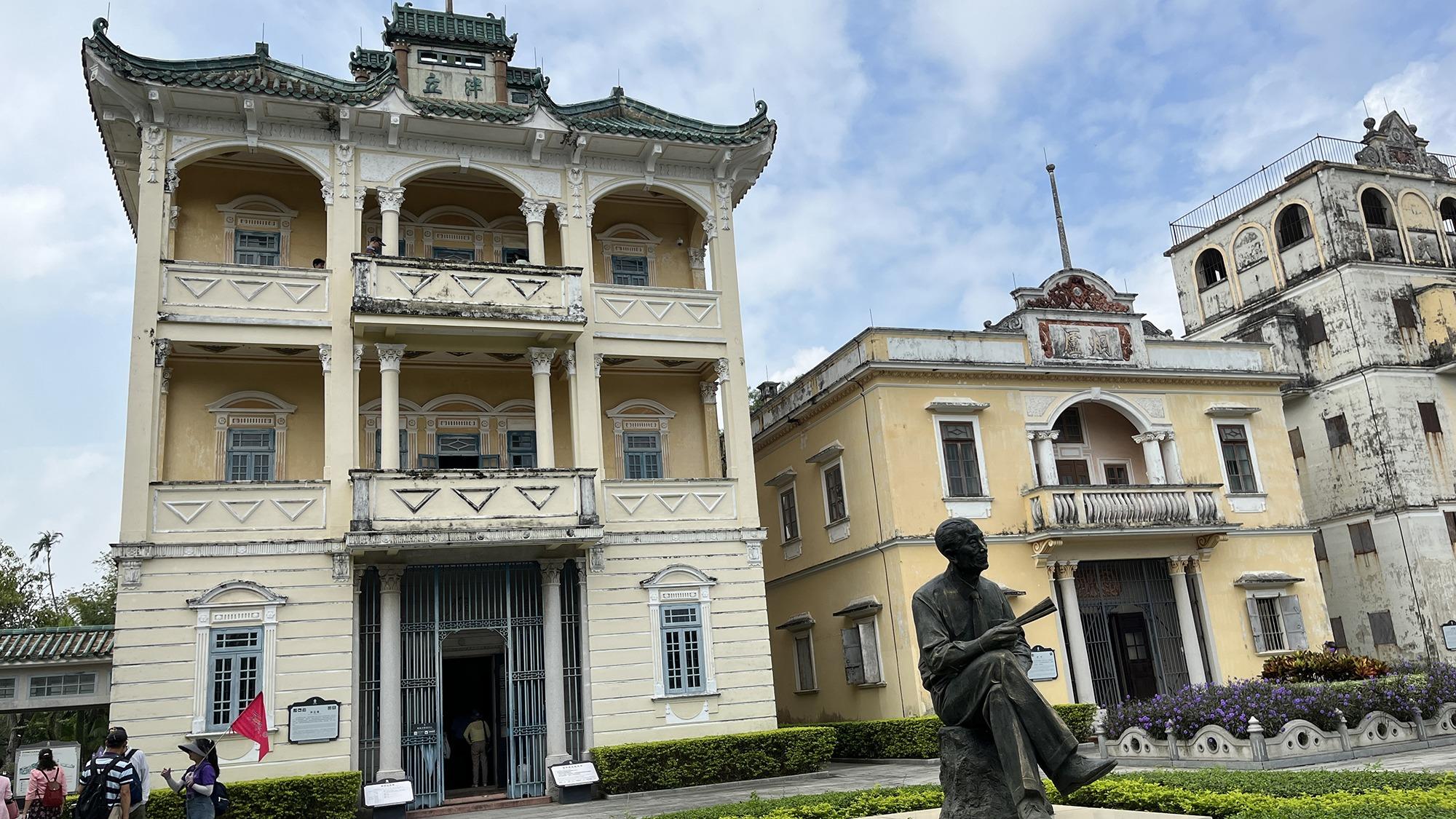 The Panli Building in Liyuan Garden built in 1926 in Kaiping, Jiangmen, Guangdong province. (YANG YANG / CHINA DAILY)
The Panli Building in Liyuan Garden built in 1926 in Kaiping, Jiangmen, Guangdong province. (YANG YANG / CHINA DAILY)
Five years ago, Qian Xiaohua, founder of Librairie Avant-Garde, a bookstore brand based in Nanjing, capital city of East China's Jiangsu province, came to Kaiping, a county-level city of Jiangmen in South China's Guangdong province, to look for a site in the countryside that might be transformed into a modern bookstore. He came here at the suggestion of Li Yuxiang, a photographer who had spent decades preserving Chinese people's memories of rural areas, especially ancient villages, with cameras.
About a two-hour drive from Guangzhou or Zhuhai of Guangdong province, Jiangmen is one of the first places in China that, in the mid-19th century, saw its poor residents emigrate overseas to pursue their dreams. It is also the hometown of Liang Qichao (1873-1929), a renowned intellectual, political activist, historian and educator, who is widely seen as one of the country's flag carriers for modernization.
About 20 years ago, Li worked with Zhang Boxiong, now a professor with Wuyi University in Guangdong specializing in the study of the hometown culture of Chinese emigrants, publishing a collection of photos of diaolou and other old houses in Kaiping.
Diaolou refers to the multistory defensive village houses in Kaiping, which fused Chinese and Western structural and decorative forms in a complex and flamboyant way. They were mostly built in the early 20th century with money and ideas sent back by locals who had emigrated to North America and Southeast Asia.
In June 2007, UNESCO inscribed Kaiping Diaolou and Villages to its list of World Heritage sites as they "reflect the significant role of emigrant Kaiping people in the development of several countries in South Asia, Australasia and North America, during the late 19th and early 20th centuries".
Li showed Qian around the villages in Kaiping, such as Zili and Majianglong, hoping to find a house that might harbor the potential to become a bookstore.
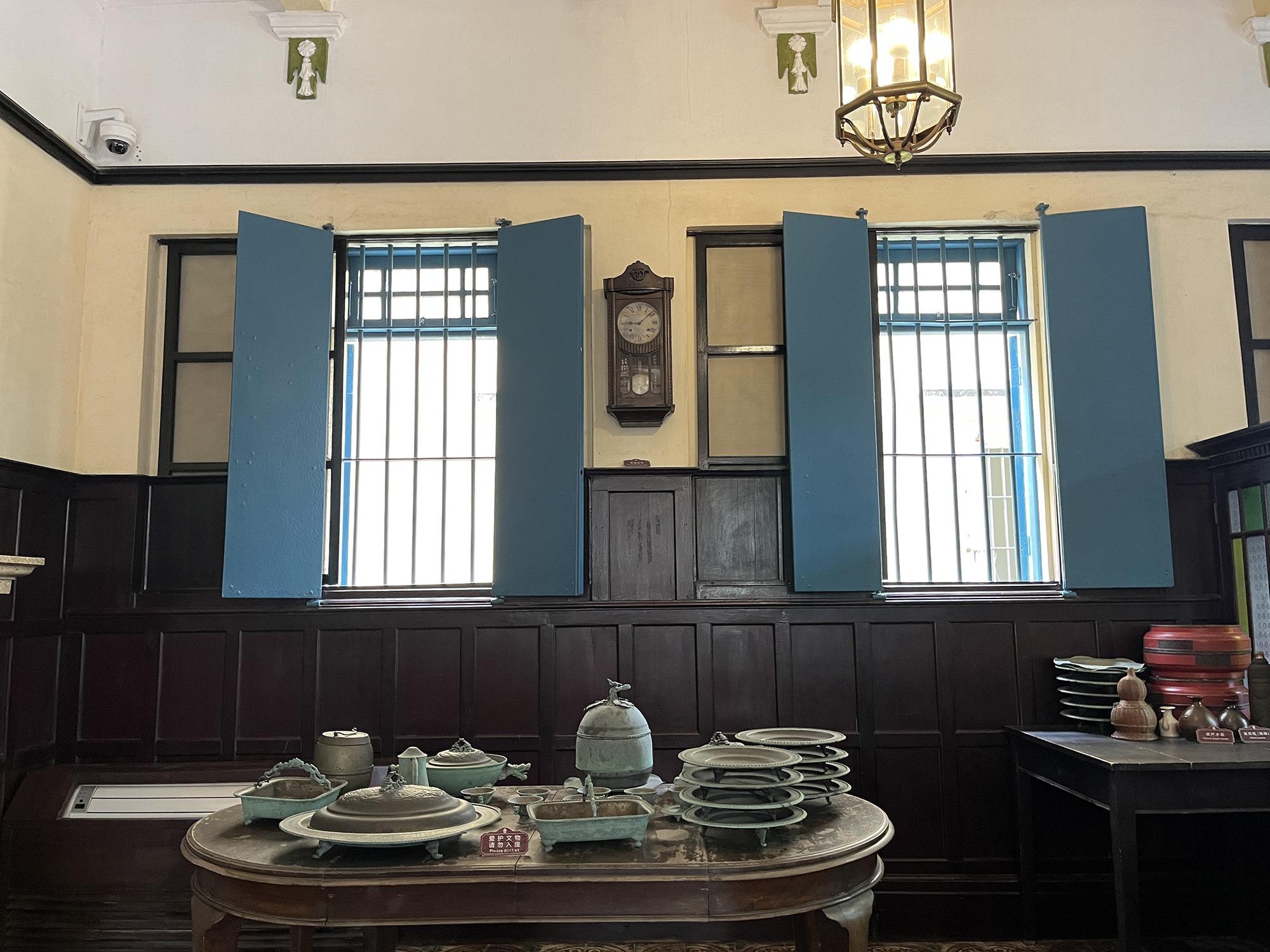 Solid, steel window shutters overlook utensils inside the building. (YANG YANG / CHINA DAILY)
Solid, steel window shutters overlook utensils inside the building. (YANG YANG / CHINA DAILY)
Twenty-seven years ago, Qian opened the first Librairie Avant-Garde in Nanjing. About 10 years ago, as an increasing number of bookstores closed due to the fast expansion of online shopping platforms and their discounted prices, Qian looked to the countryside for opportunities. This strategy also acted as a way of revitalizing the emptying villages, where young people were leaving to find higher-income work in big cities, leaving only children and the elderly behind.
"We believe that Chinese culture is rooted in the rural areas. To rejuvenate Chinese culture, we first need to vitalize the rural areas. So, for us, opening bookstores in the countryside is more valuable and meaningful than doing so in the cities," says Zhang Ruifeng, rotating chairman of Librairie Avant-Garde.
With several successful examples already in operation, especially the bookstores at Chenjiapu village in Zhejiang province and Beilong village of Shaxi ancient town in Yunnan province, Qian aims to set up more bookstores in remote rural areas.
"For many local governments, they can use our bookstores to leverage other cultural and tourist resources," Zhang says.
Five years after the bookstore was opened in 2018, Chenjiapu has become a national model village for rural vitalization, with many high-end hotels and cultural creative workshops emerging in the surrounding areas.
The Shaxi Bookstore is located in a remote village on the Yunnan-Guizhou Plateau, but in the past three years, 55,000 books have been sold. The rents in the surrounding villages have also grown exponentially.
At first, Li and Qian went to the villages to see diaolou, including the one used in Chinese film director Jiang Wen's Let the Bullets Fly. In the movie, the most powerful man in the fictional city of Echeng, Huang Silang, lives in a building that is, in reality, Mingshi Building, a six-story diaolou built in 1925 by Fang Runwen, a local man who returned with money he earned in the United States.
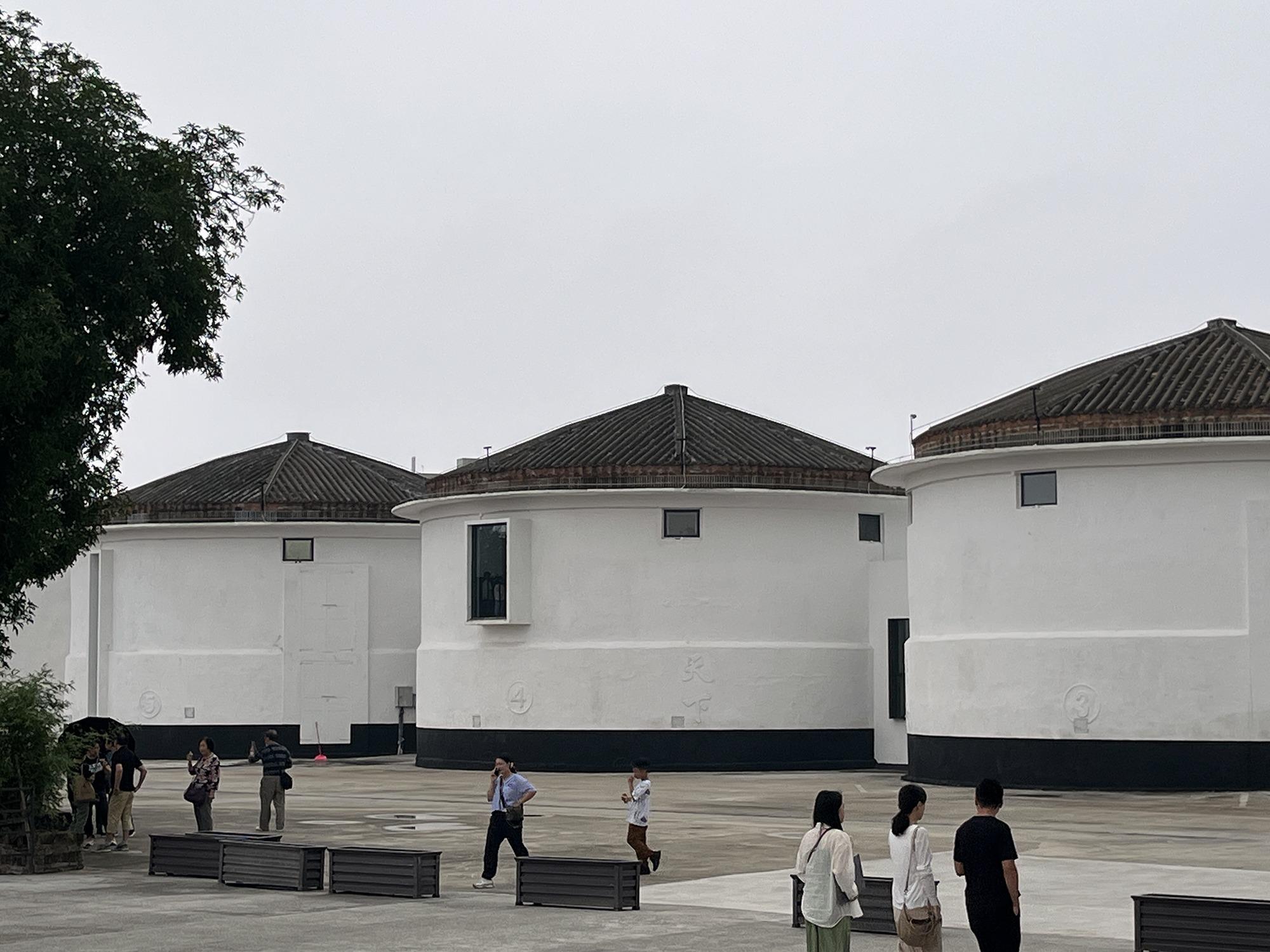 Visitors to the Jiangmen Kaiping Avant-Garde Bookshop. (YANG YANG / CHINA DAILY)
Visitors to the Jiangmen Kaiping Avant-Garde Bookshop. (YANG YANG / CHINA DAILY)
At the end of the Qing Dynasty (1644-1911), work opportunities in places such as North America, Southeast Asia and Latin America attracted many impoverished people in Kaiping to travel across the sea to pursue their dreams in foreign lands, despite various dangers, including fatal infectious diseases en route, terrible work conditions, and, in the case of the US, the Chinese Exclusion Act of 1882.
While many Chinese workers lost their lives overseas, others, having seen a bigger world, sent their savings and ideas about what a good residence should be — postcards printed with foreign buildings, photos of buildings or blueprints — back to Kaiping to build houses, to which they would return, get married and have children.
Starting from the end of the Qing Dynasty, in the 1920s and '30s, the construction of houses using money sent from overseas peaked.
At first, returned Chinese built traditional houses, but later they turned to other types of residences, due to different needs — diaolou, Western villas, schools, and commercial arcade houses.
Diaolou are unique due to their defensive functions. At that time, in such a poverty-stricken place as Kaiping, following in the returning footsteps of overseas Chinese were bandits. The houses were thus fortified, built with steep walls and equipment to fire weapons and escape.
Overseas experiences also brought an exotic aesthetic to the architecture, which often fuses Chinese styles with those of Europe, Southeast Asia or North America — colonnades, stone carvings in the European style and spires, for example.
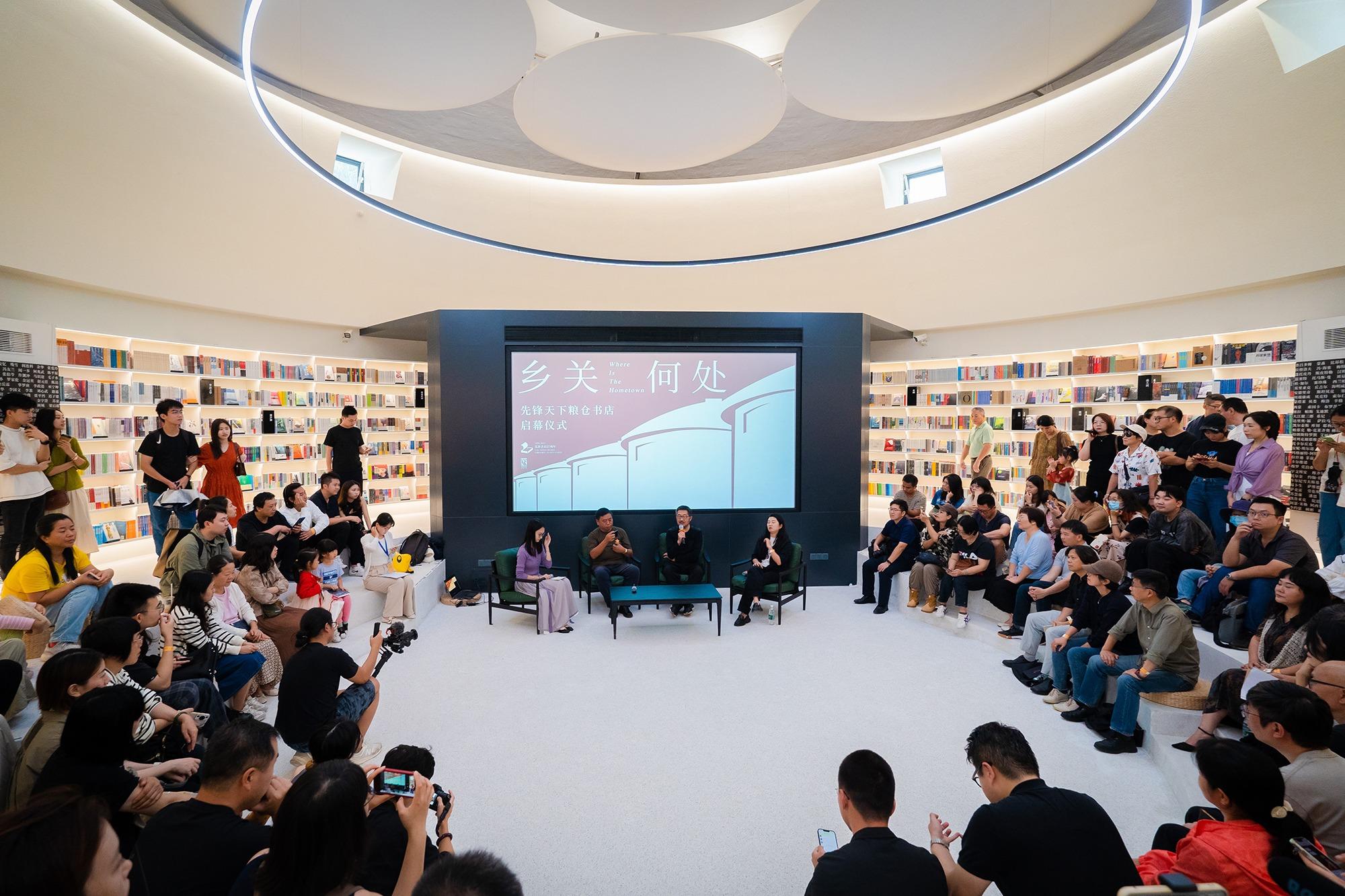 Experts introduce aspects of the bookshop at its opening ceremony on Nov 11, 2023. Visitors flock to the bookstore. (PHOTO PROVIDED TO CHINA DAILY)
Experts introduce aspects of the bookshop at its opening ceremony on Nov 11, 2023. Visitors flock to the bookstore. (PHOTO PROVIDED TO CHINA DAILY)
In the most representative work of Kaiping diaolou, the Panli Building in the Liyuan Garden built in 1926, visitors are amazed when they see the vivid floor tiles imported from Italy, the steel windows and doors from Germany, and water pipes, water pumping devices, flush toilets and bathtubs from the US.
As Kaiping is located in the coastal south, in summer, storms often flooded the area, so diaolou was designed with this in mind. There is a kitchen on each floor, so that when the lower floors are flooded, people could still cook. Although concrete was largely used in the building of diaolou, the traditional red or blue bricks were also used in certain areas, because they are better at absorbing moisture.
Today, a total of 1,833 diaolou are scattered across Kaiping, with the highest concentration found in the towns of Tangkou, Chikan, Baihe and Xiangang.
Five years ago, while traveling around to visit the diaolou, at the end of his journey, Qian was impressed by the "Tianxia Liangcang" (literally meaning the world's granaries), the five giant white-walled granaries that stand beside a paddy field at the center of Tangkou town.
Light and spacious, they fully satisfied Librairie Avant-Garde's requirements for a public space, Qian says.
"At that time, the granaries were in a poor condition, but Qian made a clever choice, because granaries store physical food, while bookstores are repositories of spiritual food," Li says.
After visiting the bookstore's branches in Shaxi and Chenjiapu, and it's headquarters in Nanjing, the local officials decided to introduce Librairie Avant-Garde to Kaiping in 2020 and the granaries were the final choice.
After a year and a half of design and construction, on Nov 11, Jiangmen Kaiping Avant-Garde Bookshop was opened, covering an area of 1,553 square meters.
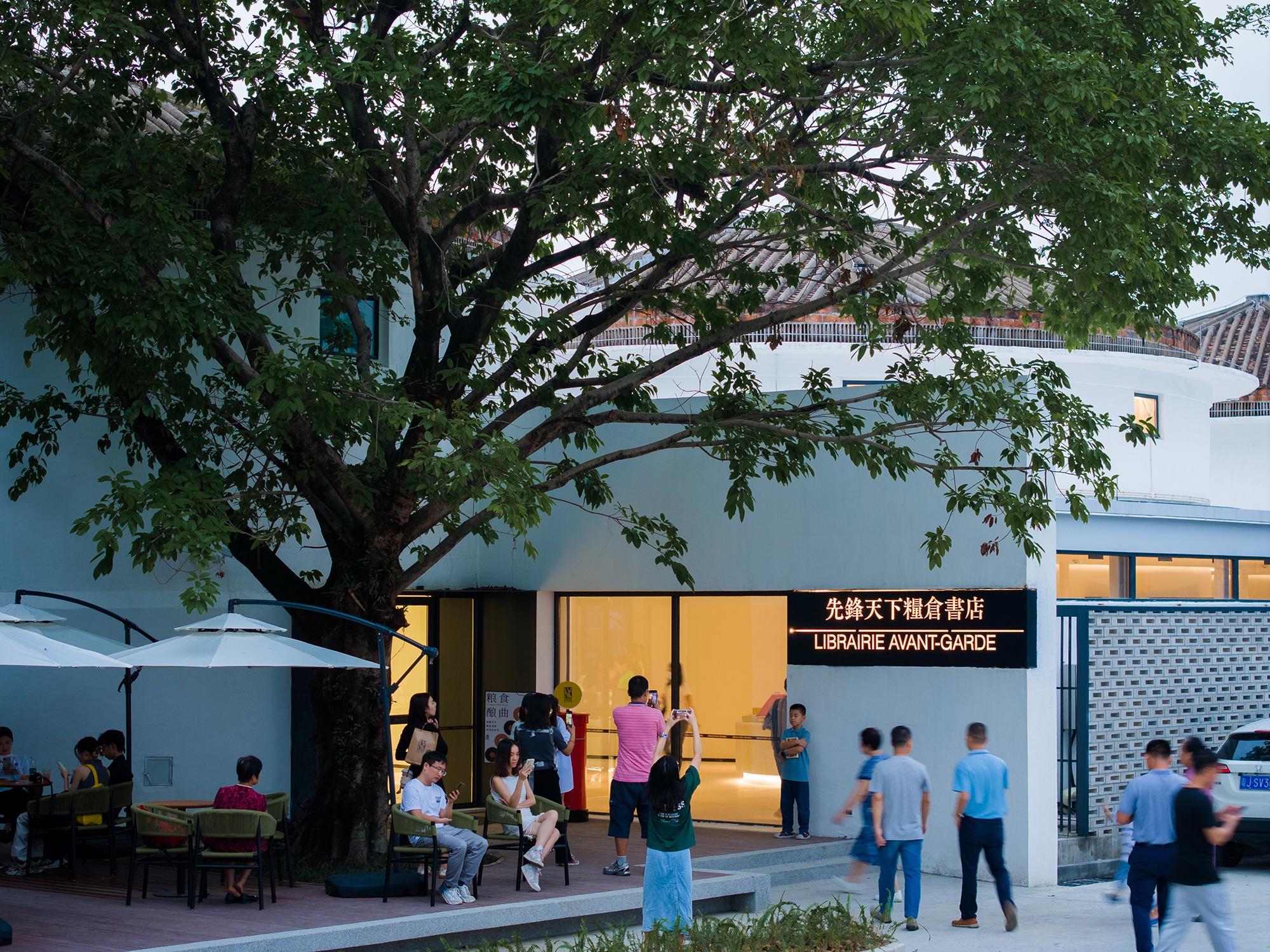 Experts introduce aspects of the bookshop at its opening ceremony on Nov 11, 2023. Visitors flock to the bookstore. (PHOTO PROVIDED TO CHINA DAILY)
Experts introduce aspects of the bookshop at its opening ceremony on Nov 11, 2023. Visitors flock to the bookstore. (PHOTO PROVIDED TO CHINA DAILY)
A total of 38,000 books are displayed throughout the five granaries, arranged according to different themes — poetry, social sciences, literature, life and children, and arts.
In the second granary, as in other branches, the bookstore stocks many books related to Jiangmen, including those about Chinese emigrants, the Maritime Silk Road, diaolou, Lingnan (a southern region in China with a distinctive cultural, historical and economic identity), and renowned people from Guangdong, like Liang Qichao.
The opening day saw hundreds of people from nearby cities including Guangdong's Shenzhen, Guangzhou, Zhuhai and the local area visiting the bookstore.
One man, surnamed Guan, from Chikan carefully examined the books about local geography and history in the second granary.
As a researcher of local history, he notes that the books in that section would be very helpful to his work and that he likes the way the books are categorized, which he says he seldom sees in other bookstores.
"This bookstore also can serve as a public space for lectures and forums, and will surely enrich people's cultural life and improve local tourism," he adds.
Originally, the five granaries were individual spaces separated from one another, but architect Yang Zhijiang and his team designed a corridor on the west side to connect them and form a big public space for books, cultural creative products and activities.
Now, hanging on the west wall of the long corridor are more than 50 posters, designed for various events held in Librairie Avant-Garde's different branches over the past 27 years. Visitors can check cultural creative products on the tables set out in front of the wall, more than 80 types of which are inspired by the local culture.
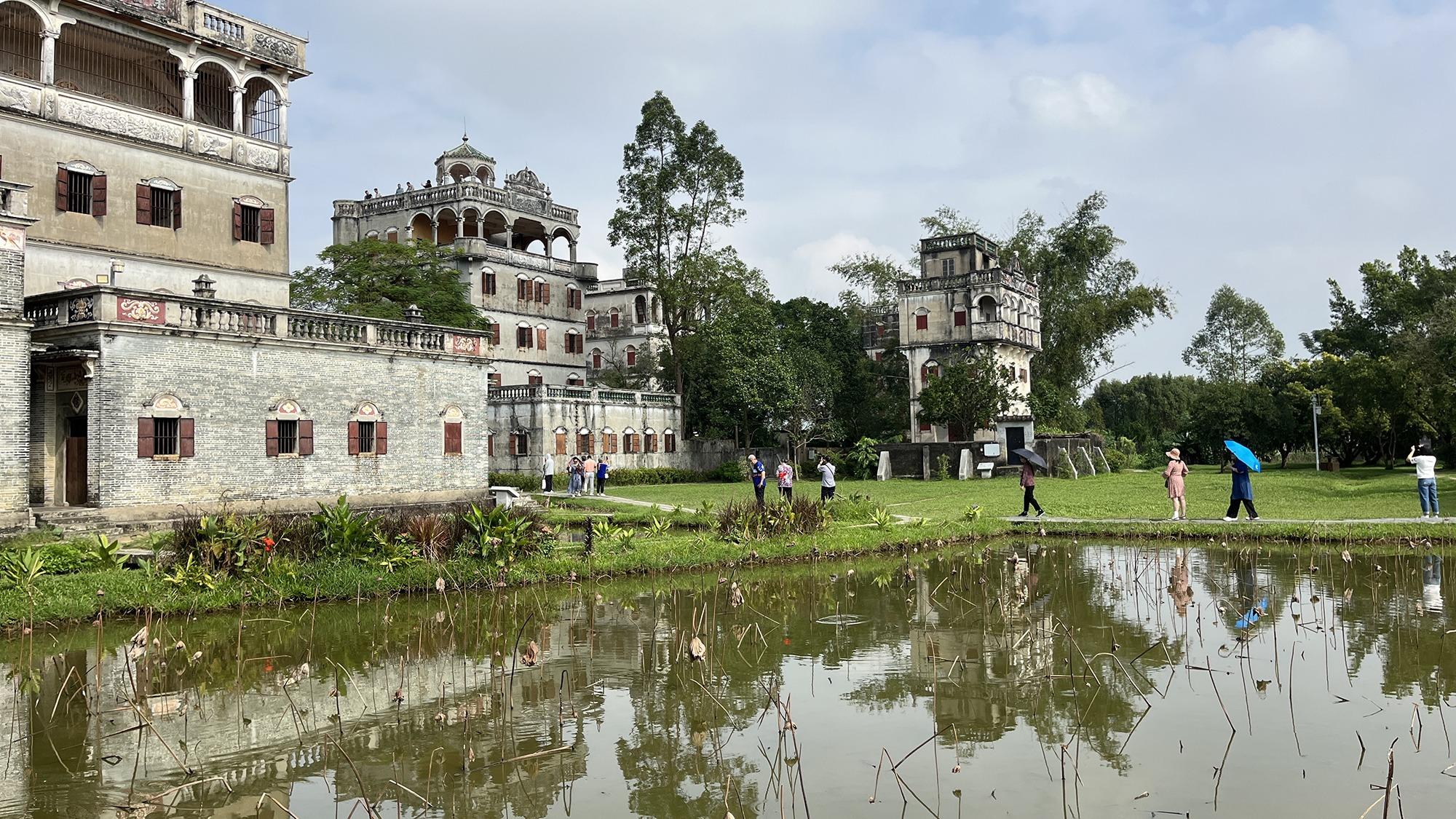 Zili village, part of the UNESCO World Heritage of Kaiping Diaolou and Villages. (YANG YANG / CHINA DAILY)
Zili village, part of the UNESCO World Heritage of Kaiping Diaolou and Villages. (YANG YANG / CHINA DAILY)
On the north side of the granaries, architects torn down the original three-story dormitory building and replaced it with a cafe. Four huge steel "trees" support the whole structure, and when people sit on the sofas below, it is like sitting in a copse.
The last part of the bookstore is a tower, which looks like an abstract diaolou, but has no particular function.
"We climbed up and found nothing there, but it does encapsulate the essence of arts and literature for its uselessness, which is so brilliant," said Han Dong, a poet who attended the opening ceremony.
With the World Heritage sites and the nearby Chikan ancient town, located in the Guangdong-Hong Kong-Macao Greater Bay Area, Tangkou has been attracting more young people back to the villages in recent years.
Since 2016, in Tangkou, Li Jijin, an architecture graduate from Wuyi University, and his friends have carried out several renovations, turning a hardware factory from the 1980s into a public space for lectures, exhibitions, reading and dining; a watch factory from the 1990s into an international youth hostel and an old post office into a corporate office.
Later, they organized a series of activities for people to learn about the World Heritage sites and the town, attracting more than 30,000 visitors to Tangkou. One of them, the Summer Country Fair, in 2020, attracted more than 50,000 people to the once abandoned industrial area.
"A sea change has happened here. It's now very strange to me. Five years ago, it was a quiet, dimly lit place, like any unremarkable town in China. But now the bookstore is welllit and pleasant. In the surrounding areas, a lot of hotels and guesthouses have appeared," Li Yuxiang says.
Contact the writer at yangyangs@chinadaily.com.cn



